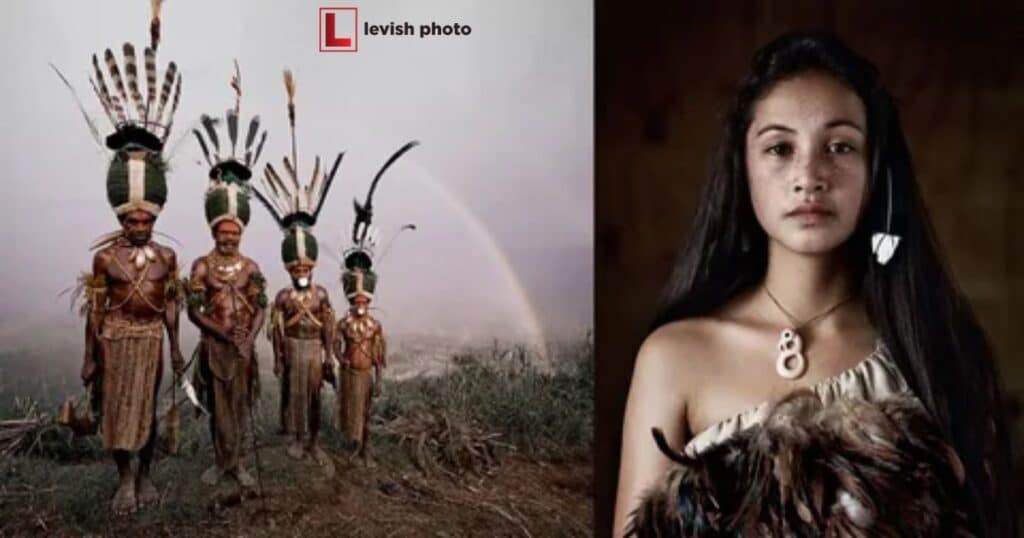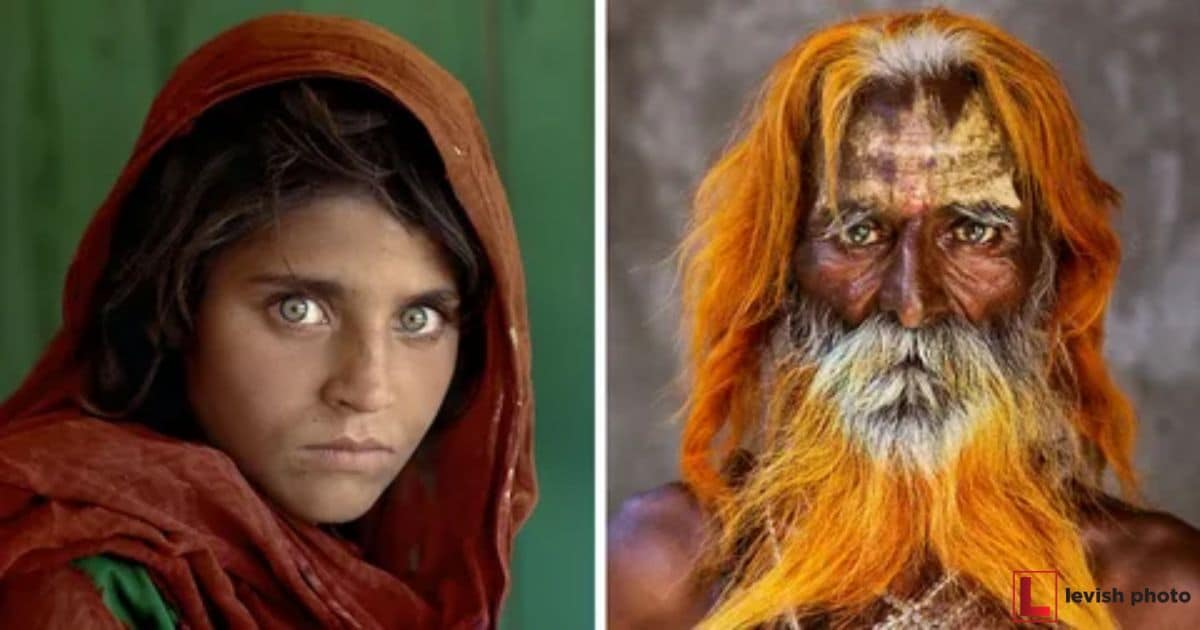The artistic model for photographic portraits refers to the sources of inspiration, styles, and techniques that have influenced the creation of portraits in photography.
What provided the artistic model for photographic portraits? Delving into the world of portraiture, we uncover the intriguing influences that have shaped the art of capturing the essence of individuals through the lens.
Photographic portraits have drawn inspiration from classical art, cultural movements, technological advancements, and contemporary trends. These influences have evolved over time, shaping the way photographers approach their craft and capture the unique character of their subjects.
The Birth of Photographic Portraiture
The Birth of Photographic Portraiture marked a revolutionary moment in the history of visual arts. It allowed individuals to capture their likenesses with unprecedented precision and permanence. This innovation, pioneered in the 19th century, forever changed how we document and remember ourselves and others.
Daguerreotypes: The Pioneering Portraits
In the early 19th century, the invention of the daguerreotype by Louis Daguerre marked the birth of photographic portraiture. These images, captured on polished silver plates, brought a new form of portraiture to the world.
The influence of classical painting was evident as early photographers sought to mimic the poses, compositions, and lighting techniques found in traditional art. These early daguerreotypes attempted to replicate the artistic models of the time, with subjects often assuming classical poses reminiscent of the Renaissance.
The Emergence of the “Carte de Visite’’
The mid-19th century witnessed the popularization of the carte de visite, a small photographic print that served as both a memento and a social calling card. These tiny portraits, influenced by the art of the period, often depicted individuals in formal poses reminiscent of classical portraits.
The accessibility and affordability of the carte de visite democratized portraiture, making it a widespread practice.
Art Movements and Their Impact on Photographic Portraits
Art movements have significantly influenced photographic portraits, shaping the way subjects are portrayed and the emotions conveyed. The Romantic movement brought a focus on emotion and individualism, leading to more expressive and dramatic portraits, with images designed to look almost like paintings.
The minimalist aesthetics of the Modernist movement led to a reduction in ornamentation and a focus on simplicity and form in portrait photography.
Pictorialism: The Fusion of Photography and Art
The late 19th and early 20th centuries saw the emergence of Pictorialism, an art movement in photography. Pictorialist photographers aimed to elevate photography to the status of fine art, drawing inspiration from Impressionism and Symbolism.
Pictorialist portraits often featured soft focus, manipulated prints, and the use of natural and soft lighting, taking cues from the painterly techniques of their time.
Modernism and the Straight Photography Movement
As the 20th century progressed, Modernism began to influence photography. Photographers like Edward Weston and Ansel Adams embraced Straight Photography, which emphasized sharp focus, precise composition, and the inherent qualities of the photographic medium.
In portraiture, this movement led to a more straightforward and realistic approach, departing from the soft, impressionistic style of Pictorialism.
Cultural Influences on Photographic Portraits

Cultural influences on photographic portraits shape the way individuals are depicted, reflecting societal values and aesthetics. Different cultures may prioritize various elements such as expression, composition, or symbolism, leading to diverse and rich artistic interpretations.
These influences enhances our appreciation of the deeper meanings embedded in photographic portraiture.
Portraiture and Identity
Photographic portraits have often served as a means of exploring and expressing identity. This is particularly evident in the portraits taken during the Harlem Renaissance in the 1920s and 1930s.
African American photographers like James Van Der Zee and Carl Van Vechten captured the cultural and social vibrancy of the era, emphasizing the beauty and dignity of their subjects. These portraits were not just artistic expressions but also important documents of a burgeoning cultural movement.
Portraits of Resistance
Photographic portraits have also been a tool of resistance and empowerment. During the Civil Rights Movement in the United States, photographers like Gordon Parks used their lenses to document the struggle for racial equality.
These powerful portraits captured the courage and resilience of individuals in the face of adversity, further emphasizing the influential role of portraiture in shaping cultural and political narratives.
Technological Advancements in Photographic Portraiture
Technological advancements in photographic portraiture have revolutionized the way we capture human emotions and expressions. High-resolution sensors, advanced lighting techniques, and AI-driven post-processing have elevated the quality and creativity of portrait photography.
These innovations enable photographers to craft stunning, lifelike portraits that truly reflect the essence of their subjects.
The Advent of Color Photography
The transition from black and white to color photography marked a significant shift in photographic portraiture. The ability to capture the richness of skin tones and the vibrancy of clothing and backgrounds opened new creative possibilities for photographers.
Color portraits took inspiration from the world of painting and aimed to replicate the vividness of real life, allowing for a more accurate representation of their subjects.
Digital Revolution and Portraiture
The digital revolution in photography brought about a paradigm shift in portraiture. With the advent of digital cameras and photo editing software, photographers could manipulate and enhance their images in ways never before possible.
Artists embraced new techniques, such as high dynamic range (HDR) photography and composite imagery, which allowed for more creative and expressive portraiture.
Contemporary Trends in Photographic Portraiture
Contemporary trends in photographic portraiture embrace diversity, emphasizing the unique stories and identities of subjects. Many photographers now use unconventional settings and experimental techniques to capture authentic expressions and emotions.
The digital age has also ushered in a focus on post-processing, allowing for creative manipulation and enhancement of portraits.
Self-Portraiture and the Age of Social Media
In the age of social media, the art of self-portraiture has gained significant prominence. Platforms like Instagram and Snapchat have made it easy for individuals to craft their own image through the lens of a smartphone.
Contemporary photographic self-portraits often draw inspiration from trends in fashion photography, pop culture, and personal branding.
The Return to Authenticity
In reaction to the highly curated world of social media, some contemporary photographers and artists have embraced a return to authenticity in portraiture. They seek to capture raw and unfiltered moments, drawing influence from documentary photography and street photography. This trend emphasizes the genuine and unposed aspects of the human experience.
The Influence of Photographic Portraits on Contemporary Art
Photographic portraits have profoundly impacted contemporary art, blurring the line between reality and interpretation. Artists now leverage this medium to explore identity, memory, and self-expression in innovative ways. The ubiquity of digital photography has democratized portraiture, fostering diverse narratives and perspectives within the art world.
Photographic Portraits as Contemporary Art
Photographic portraits have not only been influenced by traditional art forms but have also come full circle to influence contemporary art. Artists like Cindy Sherman and Nan Goldin have used photographic portraiture to explore themes of identity, gender, and self-representation.
Their work blurs the lines between art and photography, challenging traditional notions of portraiture.
The Digital Age and the Blurring of Boundaries
The digital age has brought new possibilities to the world of art and photography. The rise of digital manipulation and the blending of different media have given artists the freedom to experiment and push the boundaries of what a photographic portrait can be.
With the advent of virtual reality and augmented reality, the concept of a portrait is evolving, offering new dimensions and interactive experiences.
Influences on Photographic Portraiture
| Influence | Era/Period | Characteristics |
| Classical Art | 19th Century | Emulation of classical poses, compositions, and lighting |
| Pictorialism | Late 19th – Early 20th Century | Soft focus, manipulated prints, painterly techniques |
| Modernism | 20th Century | Sharp focus, precise composition, realism |
| Cultural Influences | Various Periods | Expression of identity, resistance, and cultural narratives |
| Technological Advancements | 20th – 21st Century | Transition to color, digital revolution, new techniques |
| Contemporary Trends | 21st Century | Self-portraiture, authenticity, impact of social media |
| Influence on Art | 20th – 21st Century | Shaping contemporary art and challenging conventions |
| Digital Age | 21st Century | Blurring boundaries with digital manipulation and new media |
Frequently Asked Questions
How did classical art influence early photographic portraits?
Early photographic portraits were heavily influenced by classical art, emulating poses, compositions, and lighting reminiscent of the classical era.
What is Pictorialism, and how did it impact portrait photography?
Pictorialism was an art movement that brought soft focus and painterly techniques to photographic portraits, blurring the line between photography and traditional art.
How have cultural influences shaped the direction of photographic portraits?
Cultural influences, such as the Harlem Renaissance and the Civil Rights Movement, have played a pivotal role in capturing the diversity, identity, and resilience of individuals in portraiture.
What role has technology played in the evolution of photographic portraits?
Technological advancements, including color photography and the digital revolution, have expanded the creative possibilities in portrait photography, allowing for more vivid and dynamic representations.
How are contemporary trends redefining photographic portraiture?
Contemporary trends in self-portraiture, authenticity, and the impact of social media are transforming the way individuals present themselves and how photographers capture the essence of their subjects in a rapidly changing digital age.
Conclusion
In this journey through the world of photographic portraiture, we’ve seen how it has evolved over time. From the early daguerreotypes inspired by classical art to the Pictorialism movement, portraiture adapted to artistic models and influences.
As cultural and technological shifts occurred, the genre shifted, documenting moments of cultural significance, like the Harlem Renaissance and the Civil Rights Movement. Today, contemporary trends and digital possibilities continue to redefine photographic portraiture.
Lines between photography and art blur, the future holds exciting potential for this dynamic genre. Photographic portraits remain a canvas for artistic expression and a powerful means of storytelling, embodying the spirit of our ever-changing world.
